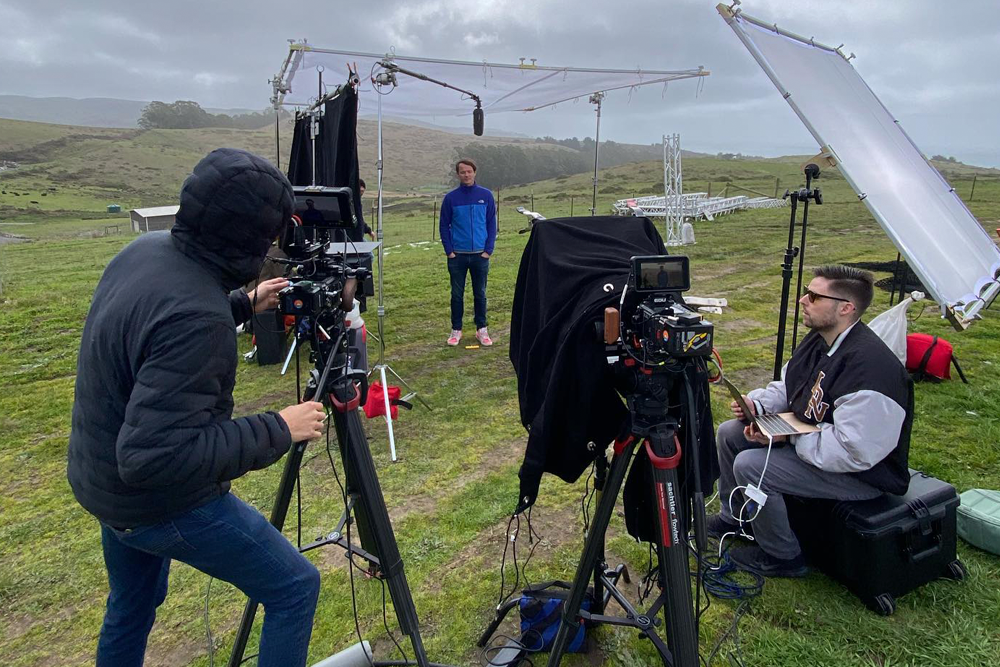Unveiling the Secret Variances Between Commercial and Corporate Videos: A Comprehensive Comparison
In the world of aesthetic storytelling, the difference between business and commercial video clips holds significant weight fit the story and purpose behind each manufacturing. While both function as effective devices in the advertising toolbox, the nuances between both categories are often neglected. Recognizing the subtle yet essential distinctions in function, design, target audience, branding focus, and manufacturing methods can be the trick to crafting impactful and reliable video web content. As we check out the complex details that establish commercial and business video clips apart, a much deeper comprehension of their one-of-a-kind functions and applications unfolds, dropping light on the strategic selections that drive successful aesthetic campaigns (difference between commercial and corporate video).
Purpose Differences
In the world of video production, an essential differentiation between commercial and company videos hinges on their distinctive functions and desired audiences. Industrial videos are largely concentrated on advertising a service, item, or brand to consumers with the objective of driving sales and creating earnings. These video clips typically use imaginative narration, emotional appeal, and persuasive messaging to captivate customers and oblige them to do something about it, such as making a purchase or seeing an internet site.
On the other hand, corporate video clips are created for exterior or internal stakeholders, such as staff members, investors, or service partners, with the aim of conveying info, developing depend on, and enhancing the credibility of the company. These video clips may include business summaries, training videos, exec messages, or event insurance coverage, emphasizing reliability, expertise, and openness.
Understanding the distinct functions of commercial and corporate videos is important for video manufacturers, businesses, and online marketers to create web content that successfully resonates with their target audience and achieves the desired purposes. By customizing the messaging, tone, and style of the video to suit the particular goals and audience preferences, business can make the most of the impact and effectiveness of their video clip advertising and marketing initiatives.
Design Variances
With the distinctive purposes of company and commercial videos developed, the focus now shifts towards checking out the design differences that separate these two forms of video clip manufacturing. Commercial video clips usually focus on creativity, home entertainment, and psychological engagement to record the audience's focus quickly. These video clips frequently employ vibrant visuals, dynamic shades, catchy music, and impactful narration strategies to develop a convincing and unforgettable watching experience. In contrast, corporate videos lean in the direction of a more expert and informative tone, aiming to share particular messages regarding the company's services, products, or values. The design of company videos is usually more straightforward, depending on concise and clear interaction, specialist narrative, and a formal visual to develop trustworthiness and depend on with the audiences. While commercial videos strive to stimulate and stimulate feelings passion, company videos concentrate on delivering pertinent information in a reliable and direct manner, tailored to the target market's expectations and requirements. These contrasting styles offer the distinct purposes of each video clip format, satisfying their designated objectives in the company and industrial worlds.

Target Target Market Varied
Customizing material to match the varied demographics and choices of the target audience is a fundamental aspect of creating efficient industrial and company videos. In the realm of industrial video clips, the target audience is generally consumers or prospective customers.
On the other hand, company videos cater to an extra certain audience, including workers, stakeholders, or partners. Understanding these differences in target audience preferences is essential for crafting impactful and relevant video web content in the commercial and company balls.

Branding Focus
Efficiently showcasing brand name identity is a pivotal facet of differentiating between corporate check here and commercial video clips. In commercial videos, the branding emphasis frequently leans towards promoting solutions or items to a wider audience.
On the various other hand, company video clips position a greater focus on building brand reputation and establishing reliability within a details industry or market. These videos are made to showcase the values, society, and expertise of the business to stakeholders, investors, and staff members. Corporate videos typically integrate narration aspects to attach and humanize the brand name on a much deeper level with the audience.
While both company and business videos focus on brand identity, the way in which branding is highlighted sets them apart in regards to their purposes and target market. By recognizing these distinctions, organizations can successfully tailor their video content to accomplish their certain branding objectives.
Production Distinctions
In the realm of video production, the distinction in between company and business videos expands past branding focus to incorporate notable distinctions in manufacturing methods. Industrial video clips often prioritize creative thinking and emotional effect to involve audiences swiftly. These videos usually feature high-quality visuals, dynamic storytelling, and catchy soundtracks to leave a long lasting perception on the audience and drive sales or brand recognition. In contrast, corporate videos lean in the direction of a more helpful and professional tone, concentrating on supplying details messages clearly and concisely. The production of company video clips emphasizes portraying the business's values, services, or products in a straightforward manner to develop trust fund and reputation with stakeholders.
From a technological point ofview, business video clips might include a lot more sophisticated sets, aesthetic effects, and motion picture methods to develop a visually stunning and remarkable piece. On the other hand, business video clips have a tendency to be more simple, utilizing expert and tidy visual appeals to straighten with the company's brand name image. In addition, business videos might have much shorter production timelines and higher budgets to fulfill the demands of attention-grabbing advertising and marketing, while business videos usually adhere to a more methodical and organized manufacturing procedure to ensure precision and alignment with the firm's purposes.

Final Thought
To conclude, commercial and corporate video clips serve unique objectives and target various audiences. The style, branding focus, and manufacturing procedures additionally differ click over here between both sorts of videos. Recognizing these key variations is essential for businesses looking to create effective video material for their marketing and communication approaches. By identifying these our website distinctions, firms can customize their video clips to better resonate with their details target audience and achieve their preferred goals.
In the realm of video production, a basic differentiation between business and business video clips exists in their distinctive functions and intended target markets.With the distinct functions of business and corporate videos established, the focus currently shifts in the direction of examining the design variances that distinguish these 2 kinds of video manufacturing (video marketing). While industrial video clips aim to trigger and evoke sensations rate of interest, business video clips concentrate on providing relevant info in a reliable and straight fashion, customized to the target audience's requirements and assumptions.In the realm of video clip production, the difference between commercial and business video clips extends past branding focus to incorporate noteworthy distinctions in production strategies. In addition, commercial videos may have shorter manufacturing timelines and greater budgets to satisfy the demands of eye-catching advertising and marketing, while company videos frequently adhere to an extra systematic and structured production procedure to make sure precision and placement with the company's purposes